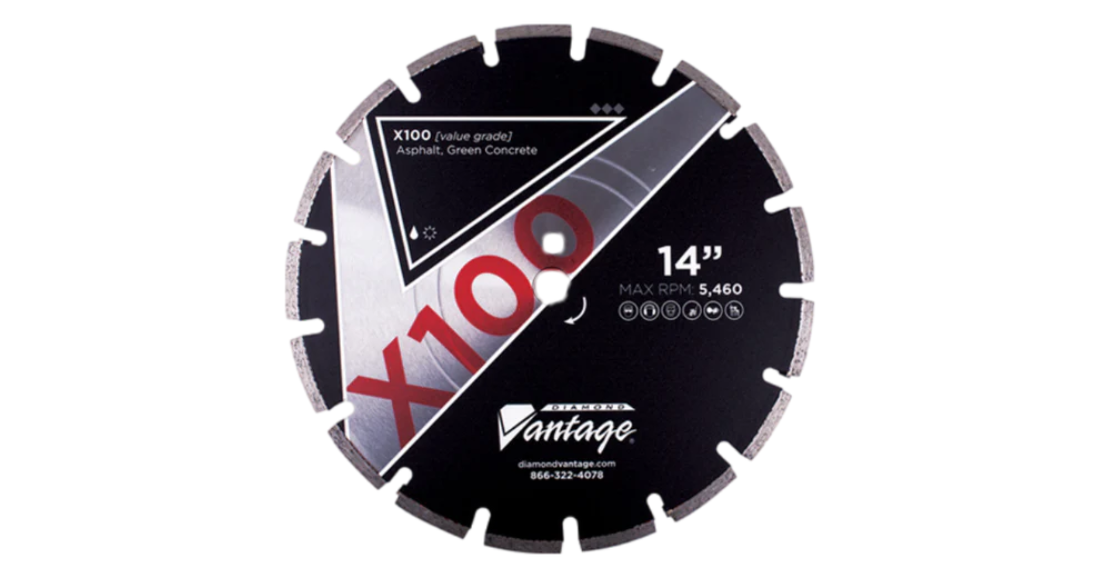
Navigating the Market: A Buyer's Guide to Asphalt Blades and Tools
Share
Among the various types of stones, asphalt stands out as one of the tougher grades, demanding a sharp blade to cut through effectively. When the task involves replacing or repairing asphalt, a solid understanding of the optimal blades and brazed tools becomes crucial.
The differentiating element of the blade lies in its cutting edge. The metal bond that securely holds the diamond fragments determines its ability to achieve precise cuts. This comprehensive manual aims to aid contractors in selecting the appropriate blades and tools for achieving impeccable cuts. This, in turn, minimizes the likelihood of needing rework shortly after completing the job.
Understanding Asphalt Blades
Asphalt has a softer composition compared to granite, marble, or concrete. A more robust bond is required to cut through it effectively without causing damage or blade erosion. The metallic bond that holds the diamond particles together is crafted from the most resilient materials: tungsten and cobalt.
Attempting to use softer bonds on asphalt proves ineffective. The blade operates so that as it slices, the edges become exposed. The abrasive grit of the diamonds persists in cutting through the asphalt as these edges gradually wear down. This cycle persists, unveiling a fresh layer of grit as the edge gradually diminishes.
Contractors can opt for either wet or dry blades for the project. Additionally, selecting the type of asphalt blade to utilize—based on the blade's design and quality—is at the user's discretion.
Factors to Consider Before Buying Asphalt Blades
While personal preferences certainly play a role in decision-making, certain factors hold sway in determining the superior performing asphalt blades. Chief among these considerations is the thickness of the asphalt. The blade's diameter and cutting edge must be capable of effectively managing the depth of the asphalt slab.
Additionally, the type of cutting operation being undertaken is another vital factor. Is the task-centered around repairing potholes and performing minor tasks, or does it involve larger-scale projects like replacing entire slabs? Opting for higher-quality blades becomes more prudent for substantial undertakings, as they exhibit prolonged durability.
Lastly, the choice between a wet or dry asphalt blade is influenced by what works best for the user and the specific task. In this regard, personal preferences tend to exert more influence than objective factors.
Different Types of Asphalt Blades
These are the different types of blades to choose from when cutting asphalt:
- Wet Blades
- Dry Blades
- All Purpose Blades
- Combo Blades (for asphalt and concrete)
Note: Concrete blades and other blades specified for their intended use should only be used on asphalt if they are combo blades.
Wet vs. Dry Blades
There are a few differences to note between wet and dry blades. Most contractors prefer using wet blades over dry ones.
- Wet Blades: These blades incorporate water for cooling during the cutting process. The water serves a dual purpose—cooling the blade, preventing dust from becoming airborne, and obscuring the cutting lines. Notably, wet blades feature a more robust bonding structure.
- Dry Blades: In contrast, dry blades possess a more pliable bond and rely on airflow to facilitate cooling. Air circulation helps dissipate heat generated during cutting operations.
Selecting the Right Asphalt Tools
For optimal performance on asphalt, sintered diamond tools are the preferred choice. In addition to selecting the appropriate blade for the task, the right tools play a pivotal role in successful execution. Using a jackhammer, for instance, is ill-advised for asphalt cutting as it tends to just sink into the material and not really break anything up..
Employing sharp blades and suitable tools is paramount when addressing potholes and working with asphalt slabs. Additionally, having asphalt sealants on hand for more enduring repairs and utilizing equipment to address underlying causes of asphalt damage like tree roots, weather damage or soil erosion should also be taken into account. These considerations collectively contribute to achieving superior outcomes.
Tips for Buying Asphalt Blades and Tools
Here are some tips to remember when purchasing blades and tools for cutting asphalt:
- Adhere to your budget diligently and gain insight into blade costs by researching and comparing prices to identify the optimal blade.
- Before commencing any project, maintain a checklist. This practice helps gauge expenses against potential profits.
- Before purchasing, thoroughly investigate the finest and most reliable tools and blades. Opt for top-notch quality that aligns with affordability.
Maintenance and Care
A series of steps should be followed to uphold the maintenance and well-being of the blades and tools employed in stone fabrication and cutting:
- Post each use, ensure the blades receive a thorough cleaning treatment. Eradicate all traces of dust particles and tenacious residues that could progressively compromise the integrity of both the blades and tools.
- Regarding storage, exercise caution by placing the blades where their edges won't come into contact with intricate objects that might lead to breakage or chipping.
- It's imperative to refrain from storing the blades in a damp state. After cleaning, meticulously dry them before securely storing them, ensuring their preservation.
- During the cutting process, maintain a consistent straight-cutting motion and avoid any inclination to turn the blade while in operation. Rotating the blade midway through cutting could result in its fracture.
Call TSC Fabrication Solutions Today
Contact us today for more information on our blades, and let us guide you to suitable asphalt blades and other brazed tools needed to complete any stone project. Feel free to reach out to us for further details about our blades. We're here to assist you in discovering the ideal asphalt blades and other essential brazed tools required to wrap up your stone project successfully. Explore our diverse selection of blades and tools designed for stone fabrication, and let us help you make the perfect choice. Contact us today to get started.
